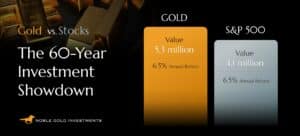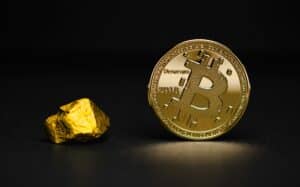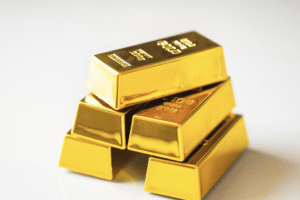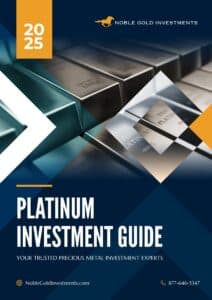After months of heated debate, President Trump’s “Big Beautiful Bill” has officially been passed by Congress and signed into law. The House passed the bill 218 to 214, and the Senate approved it 51 to 50 with Vice President J.D. Vance’s tiebreaking vote, without a single Democratic “yes.”
The bill provides some measure of immediate economic relief through tax cuts, incentives, family benefits, and utility fee cuts. However, the potential risks of the Big Beautiful Bill are significant. How will the Big Beautiful Bill affect the economy over the long term?
Many financial authorities have cited inflation, ballooning debt, and global economic insecurity as very real threats that could result from the bill. When economic uncertainty is part of current market sentiments, many experienced investors look for commodities that are relatively unaffected by market fluctuations or downturns.
Historically, precious metals like gold and silver have proven to be fairly dependable investment strategies during economic uncertainty. Is that still the case with these new developments? If so, when is the best time to buy gold or silver?
What’s Inside the Big Beautiful Bill?
The following are some of the provisions of the Big Beautiful Bill that are likely to have the biggest impact on the American economy and everyday investors.
A key provision is the permanent extension of the 2017 Tax Cuts and Jobs Act (TCJA), which reduced most income taxes and cut the corporate rate to 21%. The TCJA boosted the standard tax deduction to $12,000 for individuals, $18,000 for heads of household, and $24,000 for joint returns.
Congress also made the expanded estate tax exemption of the TCJA permanent, increasing the exemption to approximately $15 million per individual. This allows individuals to transfer more wealth tax-free. The Big Beautiful Bill also temporarily increased the cap on the state and local tax (SALT) deduction to $40,000 for certain taxpayers through 2029.
On the surface, the Big Beautiful Bill’s immediate economic benefits may prove effective in the short term. But in the long run, the bill’s long-term benefits decidedly favor the ultra-rich. Most, if not all, of the benefits to lower- and middle-class workers — such as child tax credits, payroll tax deferrals, and single stimulus payments — will expire at some point.
Beyond the baked-in, near-term benefits, lopsided as they may be in favor of the rich, the Big Beautiful Bill has other ramifications that could upend the domestic economy. Individuals may not be aware of them. These effects should be considered when planning investment strategies during economic uncertainty.
Debt and Inflation: The Long-Term Cost
According to the Congressional Budget Office (CBO), the Big Beautiful Bill is on track to reduce federal revenue to $4.5 trillion, down $3.7 trillion. That will add $3.3 trillion to the national debt over the next decade. The bill also raised the national debt ceiling by $5 trillion so the federal government can continue to borrow funds to pay off outstanding bills.
Without major spending cuts to offset the debt balance, the deficit is almost certain to grow exponentially. Everyday Americans will be hit hard by the ballooning deficit. The bill will most likely send interest rates upward, making mortgages, auto loans, and credit card payments more expensive. The return of inflation is a very real risk.
Another major consequence is the bill’s effect on the U.S. dollar. This is already visible in the market. According to Morningstar.com, the U.S. dollar’s value has dropped by almost 11% since the beginning of 2025. That’s the worst first-half performance in over 50 years, and the worst overall half-year performance since 1991. The devaluation has hurt consumer confidence in a big way (and it was already questionable to begin with).
If the Big Beautiful Bill’s negative effect on the economy continues, Congress may find itself resorting to austerity measures on programs like public services. It could also reduce entitlement benefits and increase taxes on the middle class. It’s fairly safe to say that no one — at least voters — wanted to see this development.
Global Shifts & Dollar Destabilization
The status of the dollar as it relates to the global economy is alarming at best. Already, the emerging economies that make up the ad-hoc BRICS bloc (Brazil, Russia, India, China, and South Africa) are searching for ways to curtail their dependence on the U.S. dollar.
China and Russia have started setting energy and oil deals with the Chinese yuan, an especially daunting sign that demand for the dollar is dwindling. The U.S. may also be losing its grip on global technology, as more countries are using China’s BeiDou platform for navigation instead of the U.S.’s Global Positioning System (GPS).
Central banks across the world are also dumping the U.S. dollar from their asset reserves. They’re selling off U.S. Treasury bonds and other dollar-associated assets. Increasingly, central banks are turning to so-called “real” assets like gold, real estate, commodities, and other assets with tangible value.
The destabilization and erosion of the U.S. dollar in global finance is a real concern. America’s growing isolation from the rest of the globe can only increase the risk to its financial foundation.
The Precious Metals Boom: Why U.S. Investors Are Moving Into Gold and Silver
How will the Big Beautiful Bill affect the economy? The question is making many domestic investors rethink where to invest their wealth. Inflation is draining cash savings. Bond yields can’t stay in step with real costs, and the dollar’s long-time dominance is losing steam quickly.
These realities raise awareness of the precious metals market. Gold, silver, and other metals are coming back to the surface as real safe havens for capital. There’s always been a portion of the investor population that has used gold as a hedge against general economic risks, giving them more direct control over their savings.
When is the best time to buy gold, silver, and other precious metals? If economic activity at the institutional level is any indication, it could be right now. Central banks and advanced investors are stocking up on gold at a record pace.
The everyday American investor, however, has some catching up to do in making gold investments. The average U.S. investor devotes less than 0.5% of their portfolio to gold, down from the historical 3%. This could be a good opportunity for investors to close the gap. If you’re new to precious metals, our First-Time Gold Buyers Guide is a great place to start. It covers everything you need to know – from why gold matters today to how to buy and store it safely.
Silver is not to be underestimated, either. It’s worth only a fraction of gold’s value of $3,500 per ounce. The “other” precious metal has been a more volatile asset. However, thanks to silver’s worth as a resource, some financial analysts expect silver to hit $50 by the end of summer. Its future may be even brighter — some think it could increase by 10 times by the end of 2028.
The investment community views this movement as a generational wealth transfer. It’s not a transfer from the rich to the poor, but rather from passive investors to more active protectors. Americans aren’t necessarily interested in seeing returns from precious metals — they’re more concerned about preserving purchasing power, protecting their retirement funds, and bucking the uncertainty of systemic risks.
Why Now Is the Time to Invest in Gold & Silver
The answer to the question “When is the best time to buy gold and silver?” may well be “right now.”
While the precious metal market is still relatively muted, now might be the best opportunity to use gold and silver as investment strategies during economic uncertainty. The metals are hard, tangible assets independent of inflation, political events, and declining currency value. Unlike cash and digital assets, gold and silver are rooted in tangible value. Adjusting and rebalancing your portfolio to include those private assets can go a long way toward safeguarding your wealth and capturing extended growth.
Younger generations with more time on their investment horizons have a real opportunity to grow wealth with gold, in particular. Those who invest $5,000 every year in gold and hold onto it for 60 years can expect a total return of $5.3 million in value at a 6.5% return rate. In comparison, the S&P 500’s return with the same parameters would only be $4.1 million.

The combination of long-term consistency and compounding interest makes the case for precious metals especially compelling.
How Noble Gold Investments Can Help
Noble Gold Investments has worked to remain ahead of the curve in gold and silver investment value. We’ve developed gold and silver IRAs for long-term protection. We provide solutions for the delivery and secure, insured storage of your metals. Our advisors provide consultation adapted to current economic conditions and provide upfront, transparent advice in these uncertain times.
Whether positively or negatively, the Big Beautiful Bill will have a drastic effect on the economy. It will also highlight our system’s vulnerabilities and gaps. Gold and silver are comforting, secure investments in the context of inflation, debt, and the declining U.S. dollar.
Get Started With Noble Gold Investments
How can you get started on your precious metal investment journey? Open an account with Noble Gold Investments and download our gold and silver guide to get going. You can also schedule a precious metals strategy session for more personal consultation.







